April 29, 2021 feature
Understanding the charge pumping and relaxation of the chiral anomaly in a Dirac semimetal

Thamarasee Jeewandara
contributing writer
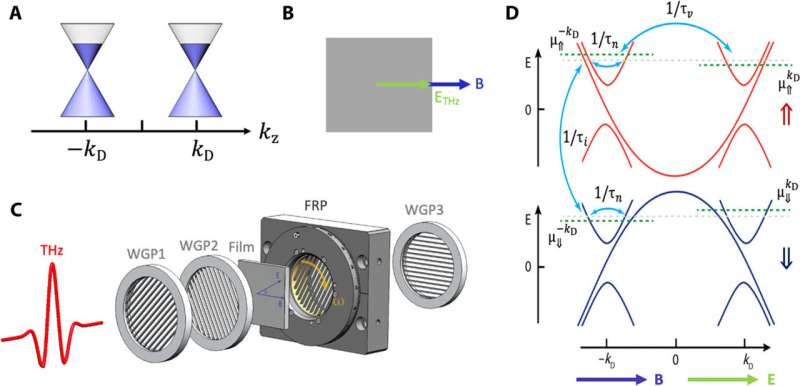
The 3D Dirac and Weyl semimetals can be characterized by a charge chirality with the parallel or antiparallel locking of electron spin in its momentum. Such materials can exhibit a chiral magnetic effect associated with the near conservation of chiral charge. In this work, Bing Cheng and a research team in physics and astronomy at the Johns Hopkins University and materials science at the University of California, Santa Barbara, used magneto-terahertz spectroscopy to study epitaxial cadmium arsenide (Cd3As2) films—a widely explored material in solid-state physics to extract their conductivities as a function of . When the team applied the field, they noted a markedly sharp – a highly acclaimed model of electronic transport suggested by physicist Paul Drude more than 100 years ago. The Drude response rose out of the broader background of this system as a definitive signature of a new transport channel consistent with the chiral response. The field independence of the chiral relaxation established that it was set by the approximate conservation of the isospin in the setup.
The chiral anomaly
Some of the most remarkable demonstrations of topological states of matter arise from their response to electromagnetic fields. For instance, topological insulators are characterized by a . Weyl semimetal and Dirac Semimetals (WSM and DSM) are states of matter in which conduction and valence bands touch and disperse near-linearly around . Each node can be identified by its chirality relative to the spin of a massless (linearly dispersing) particle oriented parallel or antiparallel to its momentum. Dirac systems are therefore similar to two copies of the Weyl systems; at each node, there are two sets of the linearly dispensing bands with opposite chiral charge. Despite being metals, Weyl semimetals and Dirac semimetals showed distinct transport effects associated with the near conservation of chiral charge. The chiral anomaly therefore existed in the quantum and semiclassical transport limits. The chiral charge is not conserved in any real material due to violations of chiral symmetry via nonlinear band dispersions. As a result, the near conservation of chiral charge is relative to emergent low-energy chiral symmetry. While the effect existed in semiclassical and quantum transport regimes, the effect was most well understood in the . Scientists have observed a negative longitudinal magnetoresistance (NLMR) in a number of Dirac semimetal and Weyl semimetal systems as a consequence of the , although NLMR is not uniquely caused by this effect.
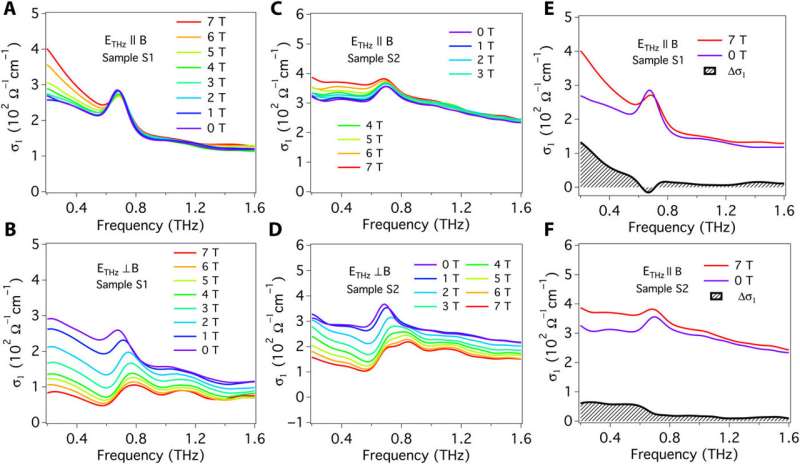
The experiments
A key parameter governing the chiral anomaly is the chiral relaxation rate. The intrinsic properties of the chiral anomaly can be most convincingly characterized by directly measuring the chiral relaxation rate and intravalley relaxation rates. King et al. used magneto-terahertz spectroscopy to study the high-quality epitaxial thin films of Dirac semimetals cadmium arsenide (Cd3As2). This is an ideal material for investigations due to its quadruple degenerate Dirac nodes that are protected by a C4 symmetry. Typically, the high-quality oriented Cd3As2 films can be grown using molecular beam epitaxy. By performing frequency dependent conductivity experiments, the scientists extracted both the chiral relaxation rate and intravalley relaxation rates directly. They then measured two Cd3As2 films and extracted their field-dependent terahertz conductivity using two contactless measurements to avoid any artefacts associated with the inhomogeneous current paths that tend to plague direct current experiments.
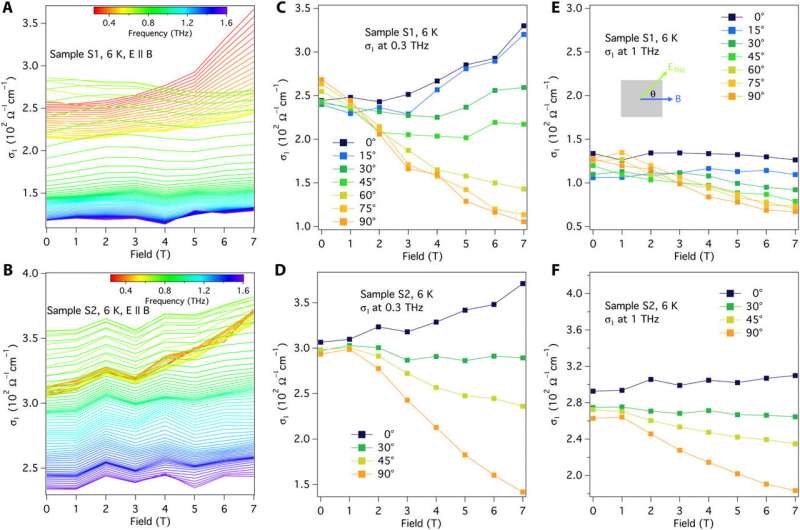
Terahertz conductivity and chiral transport
The team next investigated terahertz conductivity at different magnetic fields and extracted the dynamic charge pumping and relaxation of the chiral anomaly using fits. They noted a remarkable field-induced effect resulting in an enhancement of only the low-frequency conductivity. However, this did not result from a change in the normal scattering rate or change in carrier density of the material but relied on the appearance of a parallel transport channel with a new frequency scale. The effect was also not associated with spin-dependent scattering, which would usually manifest as an overall change in the scattering rate. The appearance of an additional transport channel and new timescale was precisely in agreement with the theoretical expectations for the chiral anomaly. Chiral transport occurred via a build-up of the effective electrochemical potential through the balance between chiral pumping and internode scattering. To distinguish a steady-state chiral current, the chiral scattering rate had to be smaller than the intravalley relaxation rate. In the experiments, Cheng et al. noted the chiral scattering rate to be approximately one-fourth of the intravalley relaxation rate in both samples. The scientists compared this relative size in light of prevailing theory and expect to conduct further studies in this area in the future. The team also interpreted the recent nonlinear terahertz experiments relative to chiral relaxation that showed a slow rate due to larger separation of nodes in the Weyl semimetal crystalline (taAs) and/or the lack of isospin scattering.
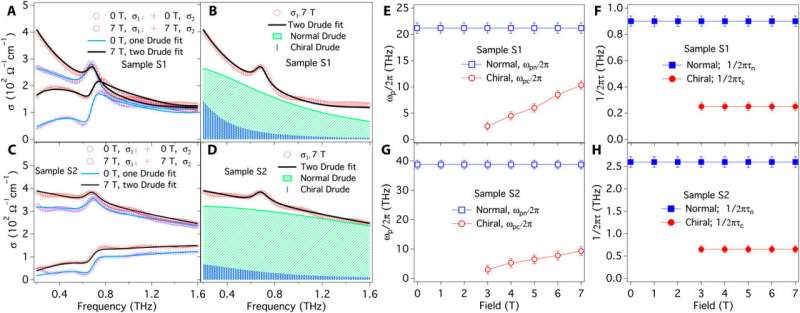
Outlook
In this way, Bing Cheng and colleagues observed an anomalous terahertz magnetoconductivity effect in the Dirac semimetal cadmium arsenide. The effect depended on the chiral magnetic effect. The observed dependence and evolution of the functional form of conductivity was in precise agreement with the theory of chiral anomaly. However, the rates of chiral scattering and intranode scattering were not precisely in agreement with the prevailing theory since chiral scattering was much stronger than predicted. The researchers will therefore develop more revised models with more realistic rates of experimental impurity scattering in the future.
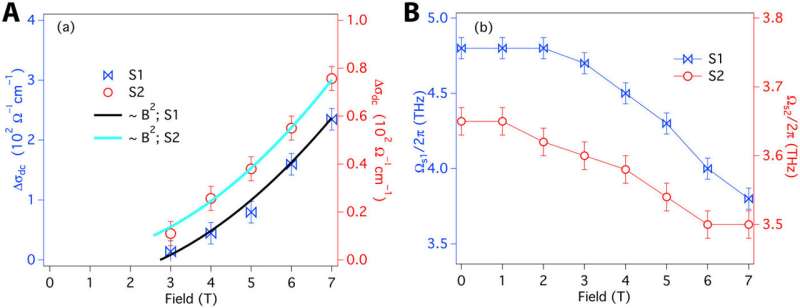
Written for you by our author —this article is the result of careful human work. We rely on readers like you to keep independent science journalism alive. If this reporting matters to you, please consider a (especially monthly). You'll get an ad-free account as a thank-you.
More information: Cheng B. et al. Probing charge pumping and relaxation of the chiral anomaly in a Dirac semimetal, Science Advances, 10.1126/sciadv.abg0914
Wu L. et al. Quantized Faraday and Kerr rotation and axion electrodynamics of a 3D topological insulator, Science, 10.1126/science.aaf5541
Parameswaran S. A. et al. Probing the chiral anomaly with nonlocal transport in three-dimensional topological semimetals, В鶹ТщФєical Reviews X
Journal information: Science Advances , Science
В© 2021 Science X Network



















